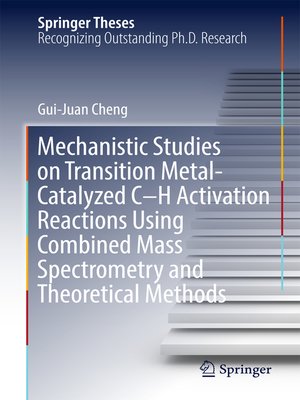Mechanistic Studies on Transition Metal-Catalyzed C–H Activation Reactions Using Combined Mass Spectrometry and Theoretical Methods
ebook ∣ Springer Theses
By Gui-Juan Cheng

Sign up to save your library
With an OverDrive account, you can save your favorite libraries for at-a-glance information about availability. Find out more about OverDrive accounts.
Find this title in Libby, the library reading app by OverDrive.



Search for a digital library with this title
Title found at these libraries:
| Library Name | Distance |
|---|---|
| Loading... |
This thesis presents detailed mechanistic studies on a series of important C-H activation reactions using combined computational methods and mass spectrometry experiments. It also provides guidance on the design and improvement of catalysts and ligands. The reactions investigated include: (i) a nitrile-containing template-assisted meta-selective C-H activation, (ii) Pd/mono-N-protected amino acid (MPAA) catalyzed meta-selective C-H activation, (iii) Pd/MPAA catalyzed asymmetric C-H activation reactions, and (iv) Cu-catalyzed sp3 C-H cross-dehydrogenative-coupling reaction.
The book reports on a novel dimeric Pd-M (M = Pd or Ag) model for reaction (i), which successfully explains the meta-selectivity observed experimentally. For reaction (ii), with a combined DFT/MS method, the author successfully reveals the roles of MPAA ligands and a new C-H activation mechanism, which accounts for the improved reactivity and high meta-selectivity and opens new avenues for ligand design. She subsequently applies ion-mobility mass spectrometry to capture and separate the [Pd(MPAA)(substrate)] complex at different stages for the first time, providing support for the internal-base model for reaction (iii). Employing DFT studies, she then establishes a chirality relay model that can be widely applied to MPAA-assisted asymmetric C-H activation reactions. Lastly, for reaction (iv) the author conducts detailed computational studies on several plausible pathways for Cu/O2 and Cu/TBHP systems and finds a reliable method for calculating the single electron transfer (SET) process on the basis of benchmark studies.







